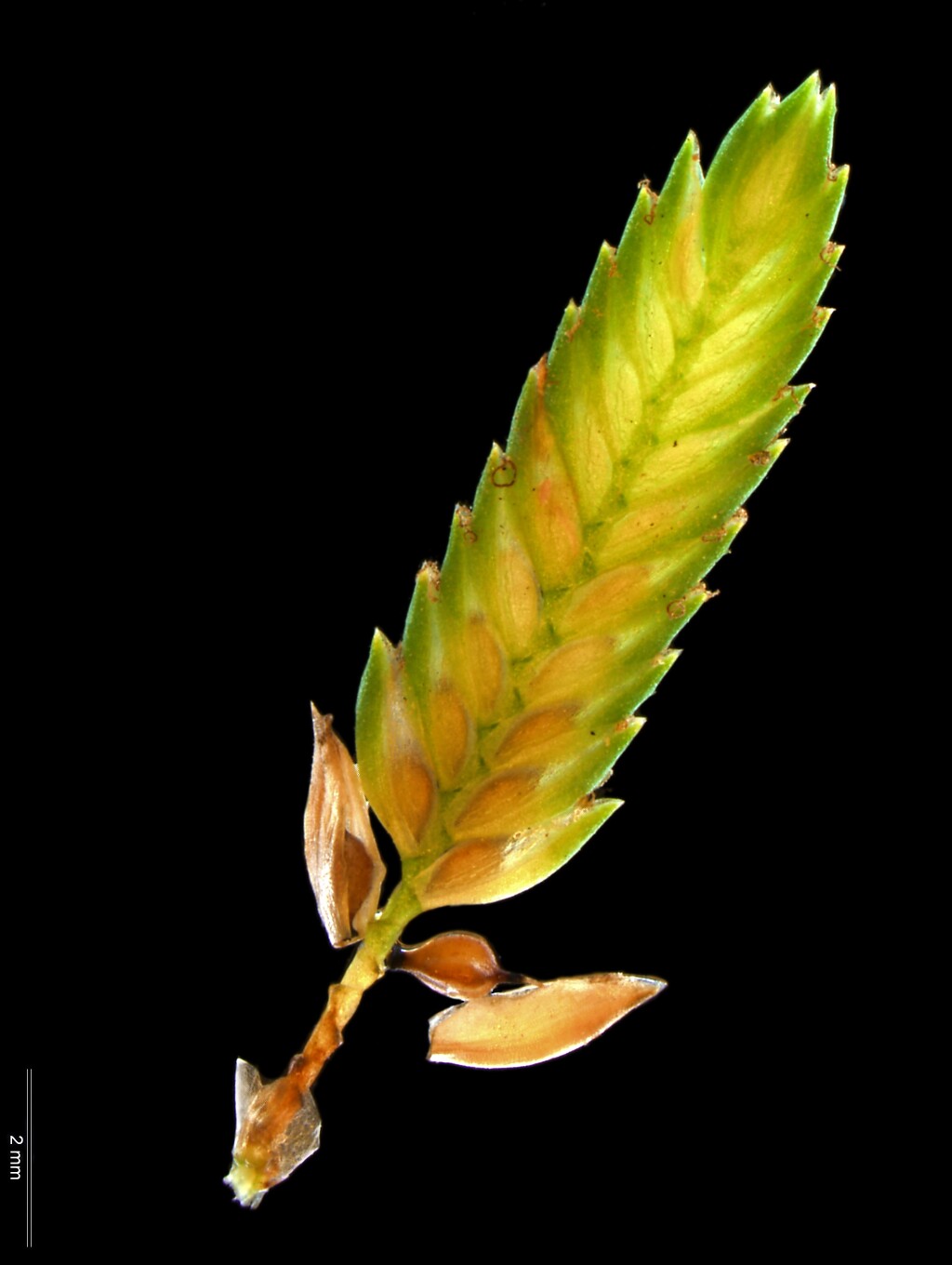Cyperus eragrostis
Lam. Drain Flat-sedgeTufted perennial, with very short rhizome. Culms trigonous, smooth, 25–90 cm high, 2–4 mm diam. Leaves slightly septate-nodulose, as long as culms or shorter, 4–8 mm wide. Inflorescence simple to compound with up to 12 primary branches to 12 cm long; digitate clusters 1–5 cm diam.; involucral bracts leaf-like, 5–9 exceeding inflorescence. Spikelets flattened, numerous per cluster, to 30-flowered, 5–15 mm long, c. 3 mm wide; rachilla not winged, persistent; glumes with 3-nerved keel, surface conspicuously isodiametric-reticulate, greenish to white or straw-coloured, tinged yellowish or red-brown, 2–2.5 mm long; stamen 1. Nut triquetrous, obovoid, dark brown to greyish, c. one-half as long as glume, 1–1.4 mm long, c. 0.5 mm diam. Flowers spring–summer.
LoM, MuM, Wim, GleP, Brid, VVP, VRiv, MSB, RobP, MuF, GipP, OtP, WaP, Gold, CVU, GGr, DunT, NIS, EGL, EGU, HSF, HNF, OtR, Strz, MonT, VAlp. Also naturalised in SA, Qld, NSW (including Lord Howe Is.), Tas. Native to North and South America. A common and often troublesome weed of ephemerally wet, open, disturbed situations (roadside gutters and drains, gardens etc.). It has extended its range and frequency considerably over the past 30 years. .
Wilson, K.L. (1994). Cyperaceae. In: Walsh, N.G.; Entwisle, T.J., Flora of Victoria Vol. 2, Ferns and Allied Plants, Conifers and Monocotyledons, pp. 238–356. Inkata Press, Melbourne.
 Spinning
Spinning



